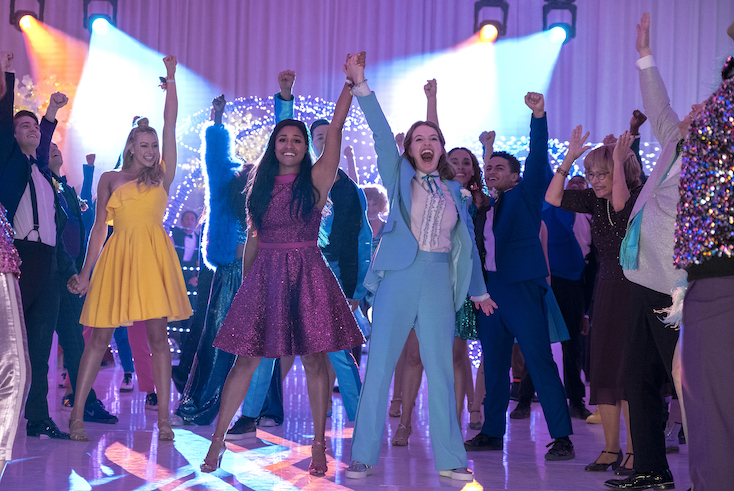Designing for change

ISBA’s head of media Bobi Carley discusses both personal and professional progress around diversity and inclusivity
It doesn’t matter how old you get or how many years of experience you have. When you step out of your comfort zone, you still get that hollow feeling in your stomach.
Whether it’s standing up to speak or writing a column for a magazine, it can still hit you.
Does that mean that Imposter Syndrome never goes away? I guess not … and I guess that’s OK, if you don’t let it stop you moving forward.
In that vein, I was humbled by the comments people sent me after last month’s column, especially by those who said that it was ‘true to me’ – so thank you!
From the day I joined Sky TV, I knew I belonged in this industry. I have been able to be myself, and I am incredibly grateful to Mark Chippendale, Steve Brown, and particularly Shona Lewis, for their help in enabling me to do that.
It’s to my great regret that, for many years, I failed to realise that this doesn’t hold true for everyone. Many people don’t feel like they belong; that they can speak up or speak out. They feel that they can’t be their true selves.
It was in the hope of standing with those who don’t yet feel that our industry is a place where they can be themselves, that last week many thousands made a stand and completed the All In census.
This is the first ever attempt to get a true sense of the level of diversity in our industry.
It’s a step forward. It’s also a recognition by industry that the sticky plasters aren’t sticking.
A lot has been said about diversity, especially over the past 12 months; but I do believe that there is a sense of urgency around this issue that has not been seen before.
Belatedly, we have come to accept that we have to design change, as it simply does not happen on its own.
[advert position=”left”]
Many of ISBA’s members are struggling with how to make progress on this, and as an organisation we also have a journey to go on, and we are just at the start.
If there were any words of advice I could most usefully give, they would be: “Listen. Actively listen; hear about people’s lives and understand them”.
I have worked in several ‘them’ and ‘us’ cultures where hierarchy created unhealthy boundaries. I recall being told too many times to maintain a distance from my team; to keep my door shut (seriously). All terrible advice.
Learning is a lifelong constant, as I am beginning to understand.
It’s a journey we’re all on, and plenty of colleagues have told me that they’re unsure where to start when it comes to making progress on diversity and inclusion. That’s why ISBA teamed up with Flock to create our Representation of a Nation guide, which is designed to be of practical help.
It isn’t about the stats. It’s about taking personal responsibility and action. It encourages people to be their authentic self, to be open-minded, and to understand the value of people. It seeks to enable individuals to play their part in ensuring that our industry better represents our nation.
The guide was launched alongside the latest wave of results in our tracker poll, which follows people’s attitudes towards how well we are doing on representation.
As with All In, we felt that it was crucial that we establish a baseline, and understand where we are starting from, so that we can measure progress as we head towards an industry that’s more diverse and inclusive.
The latest figures show that 69% of respondents agree that proper representation in ads is important; but only 51% think that TV ads demonstrate that diversity (although that is up from 42% in August last year). So we’re making progress, but still have some way to go.
That a growing number of people think that proper representation in ads is important has to be a good thing.
I grew up in an overwhelmingly white Norfolk town. I stepped out of one bubble and now live in another one in north London. The media has many faults, but I am so thankful to it that my three teenage daughters are growing up with their eyes more open than mine.
They watch The Prom (pictured), a musical about the LGBTQ community and being accepted as the norm. Moxie, about women’s rights. The Hate U Give, about fighting for racial equality. All give them an understanding and awareness that they can get a plethora of LGBTQ or BLM content.
These are the films they choose for a Saturday night. For them, these subjects are the norm. They challenge my subconscious bias. It’s harsh – but a good reality check.
A lot of negativity was sent my way after one of my first D&I posts way back when, which made me feel pretty sick. I constantly think that I am going to write the ‘wrong’ thing and be shot down. I check in with my daughters on language and they challenge me, which is exhausting but positive – as learning often is.
I tell myself: ‘Be braver’. Events over the last year have been shocking, but they are also a significant call to action. They can pull us together as communities rather than put more distance between us – if we have the courage to stand up, be our best selves, and try.



